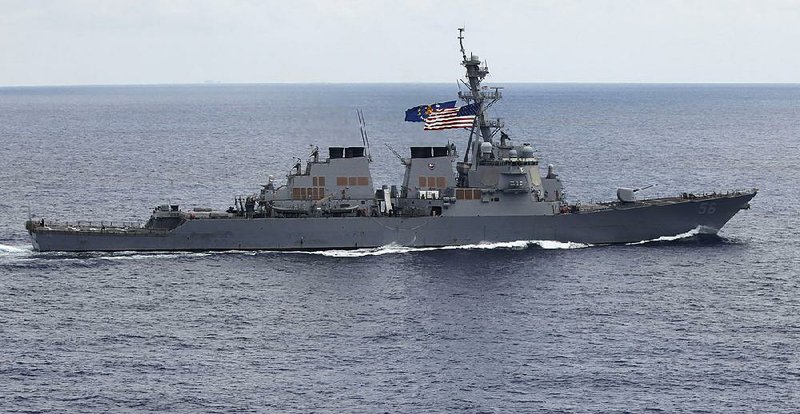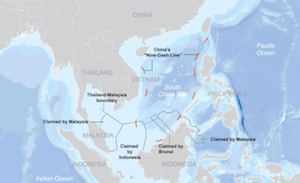MANILA, Philippines -- A U.S. warship sailed near a Chinese man-made island in the disputed South China Sea in an operation that challenged China's vast territorial claims in busy international waters, a U.S. Navy official said Thursday.
The official said Chinese vessels were in the vicinity when the destroyer USS John S. McCain sailed in a "routine" freedom of navigation operation near Mischief Reef on Thursday. It was not immediately clear if the Chinese demanded the U.S. destroyer leave as they have done in the past.
The official spoke on condition of anonymity because the official was not authorized to speak to the press about the matter.
China today expressed its "strong dissatisfaction" with the U.S. over the sail-by.
[INTERACTIVE MAP: Claims to the South China Sea]
Foreign Ministry spokesman Geng Shuang said in a statement that the U.S. move undermined Chinese sovereignty and security and endangered the safety of front-line personnel from both sides.
Geng said the Chinese navy "identified the U.S. warship, warned and expelled it."
China, which claims the South China Sea virtually in entirety, has protested such repeated U.S. military operations, which President Donald Trump's administration has continued partly to reassure allies locked in territorial rifts with Beijing.
Tensions escalated a few years ago when China began to build seven reefs, including Mischief, into islands, including three with runways, which the U.S. and China's neighbors fear could be used to project Beijing's military might and potentially obstruct freedom of navigation. China has reportedly installed a missile defense system on the new islands.
The U.S. is not involved in the long-seething disputes in the busy and potentially oil- and gas-rich waters involving China, Brunei, Malaysia, the Philippines, Taiwan and Vietnam. Washington, however, has declared it in its interest to ensure that the conflicts are resolved peacefully and that freedom of navigation and overflight remain unhampered. An estimated $5 trillion in annual trade passes through the waterway.
In the latest sail-by, U.S. military officials notified Philippine counterparts of the maneuver, a Philippine official said, adding that Philippine forces were not involved.
U.S. Pacific Fleet spokesman Lt. Cmdr. Nicole Schwegman said all Navy operations "are conducted in accordance with international law and demonstrate that the United States will fly, sail, and operate wherever international law allows."
The disputes and North Korea's recent intercontinental ballistic missile tests were high on the agenda of an annual gathering of Asia-Pacific foreign ministers last weekend in Manila.
Although China opposes inclusion of the sea disputes in international conferences, partly to prevent the U.S. and other Western governments from intervening, U.S. Secretary of State Rex Tillerson, Australian Foreign Minister Julie Bishop and Japan's new top diplomat, Taro Kono, expressed concern over aggressive actions in the waters.
They sought compliance with an arbitration ruling last year that invalidated China's claims in the South China Sea. China has ignored and dismissed the ruling as a sham.
A Section on 08/11/2017


